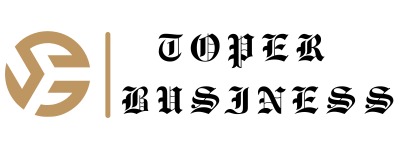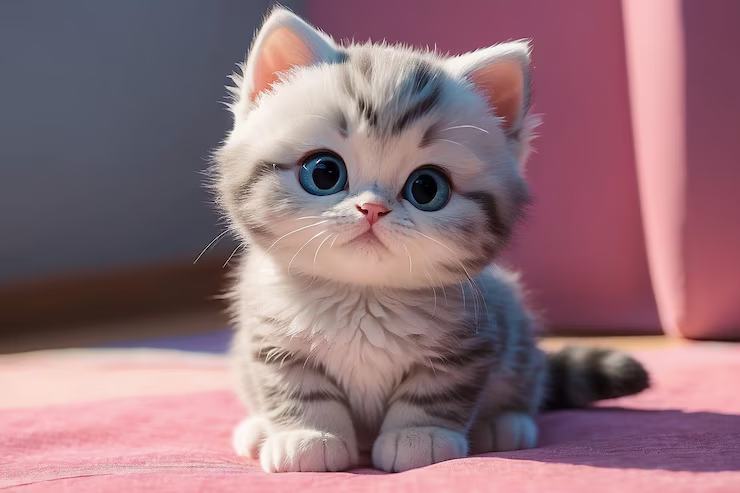Desktop:uil2zbahmom= Wallpaper has become an essential feature of every computer user’s experience. Whether it’s a simple image, an intricate design, or a functional organization tool, desktop wallpaper serves as a reflection of personal taste and productivity. With the advent of high-resolution displays and more customizable operating systems, users are empowered to enhance their screens with diverse, striking visuals. In this detailed guide, we’ll delve deep into the world of desktop wallpaper, exploring how it transforms your desktop environment, its impact on productivity, and ways to choose the perfect one. Let’s explore the endless possibilities and learn how desktop wallpaper can reshape your workspace.
The Evolution of Desktop Wallpaper
Desktop wallpaper started as a simple static image in early operating systems. Initially, users were limited to basic patterns and colors. However, with advancements in technology, customization options expanded. Now, individuals can choose from an array of themes, ranging from minimalistic designs to high-definition photographs. Today, desktop wallpaper allows users to express creativity while offering practicality. Customization is no longer just an option—it’s a necessity for users who spend hours in front of their screens. The evolution from a mere background to a dynamic canvas is evident in the variety of choices available today.
Why Desktop Wallpaper Matters More Than You Think
Many people underestimate the importance of desktop wallpaper, thinking it’s just a background that fades into the periphery. However, your choice of wallpaper can affect mood, focus, and overall productivity. A carefully selected image can inspire creativity, reduce stress, or simply provide an aesthetic pleasure that makes the workday feel less daunting. Furthermore, visually engaging desktop wallpaper can even serve as a conversation starter or a subtle display of your personal brand. It’s not just decoration—it’s part of the user experience, influencing how you interact with your digital workspace.
Boosting Productivity with Desktop Wallpaper
It’s no secret that your environment can influence your focus and productivity levels. The same concept applies to your digital workspace. A cluttered or overly busy wallpaper can become distracting, whereas a well-chosen image can help clear the mental fog and streamline productivity. For example, calming scenes like beaches or mountains can reduce anxiety, while minimalist designs can foster a sense of order. Choosing the right desktop wallpaper, one that complements your work style, can make a significant difference in maintaining focus throughout the day. Thus, the right image can act as a subtle productivity tool.
Choosing Desktop Wallpaper
The wallpaper you choose for your computer screen says a lot about your personality. Some individuals opt for bright, bold colors to energize their space, while others prefer neutral tones to maintain calm. Moreover, images with personal meaning—like family photos or vacation pictures—can boost morale during stressful tasks. Conversely, highly detailed or cluttered desktop wallpaper may increase cognitive load, making it harder to focus on work. By understanding the psychology of color and design, you can better select desktop wallpaper that aligns with your goals and enhances your overall experience.
How Resolution and Display Affect Desktop Wallpaper Quality
Choosing the right desktop wallpaper goes beyond selecting an aesthetically pleasing image. Resolution plays a crucial role in ensuring that your wallpaper looks crisp and clear on your screen. If the resolution of your wallpaper is too low, it can appear pixelated or blurry, detracting from its visual appeal. Conversely, a wallpaper with the correct resolution tailored to your screen’s dimensions can provide a seamless look, enhancing the visual experience. As screen technology advances, higher resolution wallpapers, like 4K and even 8K, have become more accessible, offering users an immersive experience.

Popular Desktop Wallpaper Themes and Styles
When it comes to desktop wallpaper, the possibilities are endless. Common themes include landscapes, abstract art, minimalist designs, and inspirational quotes. For nature lovers, breathtaking views of oceans, mountains, and forests can provide a daily dose of relaxation. On the other hand, abstract designs appeal to those who prefer non-representational art and clean lines. Minimalist styles, featuring solid colors or simple patterns, are favored by individuals seeking order and simplicity. Each theme and style can cater to different personalities, providing users with an easy way to inject personality into their workspace.
Using Desktop Wallpaper to Organize Your Icons
Many individuals use desktop wallpaper not just for aesthetic purposes but also for organization. Some wallpapers are designed with built-in sections or grids to help users arrange their desktop icons efficiently. These wallpapers provide designated spaces for specific categories such as work files, personal documents, or frequently used applications. This method of visual organization can help reduce clutter and streamline the process of finding what you need, especially for users with a large number of desktop shortcuts. Desktop wallpaper can thus be a powerful tool for both productivity and functionality.
Desktop Wallpaper as a Reflection of Personal Branding
For professionals, especially those in creative industries, desktop wallpaper can serve as a form of personal branding. A carefully curated wallpaper that aligns with your brand colors or showcases your work can leave a lasting impression, whether it’s during a meeting or a screen share. For freelancers and entrepreneurs, it offers an additional platform to express their style and personality. In this sense, desktop wallpaper becomes more than just a background—it’s a subtle yet powerful branding opportunity, showcasing who you are without saying a word.
The Role of Desktop Wallpaper in a Multi-Monitor Setup
With more individuals working remotely, multi-monitor setups have become increasingly common. This setup poses unique challenges and opportunities for desktop wallpaper. Users can either choose one cohesive wallpaper that spans across all monitors or select different images for each screen. The right wallpaper can enhance the multi-monitor experience, creating a sense of flow or allowing each monitor to serve a distinct function. When choosing wallpaper for multiple screens, it’s important to ensure that the resolution and design scale appropriately across monitors to avoid mismatched or distorted images.
Where to Find High-Quality Desktop Wallpapers
There are numerous platforms where you can download high-quality desktop wallpaper. Popular websites include Unsplash, Pexels, and Wallpaper Abyss, which offer free-to-use images in various categories and resolutions. Additionally, some operating systems come with built-in wallpaper libraries, often updated with seasonal or featured images. These platforms make it easy to find the perfect wallpaper, whether you’re searching for professional designs, personal photography, or abstract art. Always make sure to download wallpapers from trusted sources to avoid malware or viruses, and ensure that the resolution matches your display for the best visual experience.
Creating Custom Desktop Wallpapers
If you’re looking to add a personal touch to your desktop wallpaper, why not create your own? With easy-to-use design tools like Canva, Adobe Photoshop, or even basic image editors, anyone can craft a custom wallpaper tailored to their style. This allows for endless creativity, enabling users to add personal photos, quotes, or artwork that resonates with them. Custom wallpapers also offer the opportunity to incorporate branding elements, functional organization grids, or visual themes that match your mood. DIY designs provide a one-of-a-kind way to personalize your workspace like never before.
Mobile vs. Desktop Wallpaper
While desktop wallpaper and mobile wallpaper may serve the same purpose of personalizing a digital space, there are key differences between the two. For one, the screen orientation often varies—desktop screens are typically wider, while mobile screens are taller. Additionally, mobile wallpapers must account for app icons and other overlays that could obscure parts of the image. As a result, simpler designs often work better on mobile devices, whereas desktop wallpaper offers more room for intricate or detailed designs. Understanding these distinctions can help you choose the right wallpaper for each device.
Optimizing Desktop Wallpaper for Different Operating Systems
Different operating systems handle desktop wallpaper in unique ways. For instance, Windows allows users to set up a slideshow of images that change at regular intervals, while macOS has options for dynamic wallpapers that adjust based on the time of day. Linux, with its various desktop environments, offers the most customization, allowing users to manipulate virtually every aspect of their wallpaper. Knowing how your operating system handles desktop wallpaper can help you make the most of its features, allowing you to create a dynamic, personalized experience that enhances your workflow.
Desktop Wallpaper Trends
As we move through 2024, several desktop wallpaper trends are emerging. Minimalism continues to dominate, with users opting for clean, simple designs that promote focus and reduce digital clutter. On the other hand, animated and interactive wallpapers are gaining popularity, particularly among younger users. The use of AI-generated art is also on the rise, offering unique, ever-changing visuals that push the boundaries of creativity. These trends indicate that desktop wallpaper is more than just a static background—it’s evolving into a dynamic element of the digital workspace.
Accessibility Considerations in Desktop Wallpaper Design
For users with visual impairments, selecting the right desktop wallpaper is more than just an aesthetic decision—it can affect accessibility. High-contrast wallpapers with simple designs can make icons easier to see, while busy or overly bright wallpapers can pose challenges. Additionally, users who experience eye strain may benefit from softer tones or night-mode wallpapers, which reduce blue light exposure. Understanding these considerations can help you choose a desktop wallpaper that not only looks great but also supports an inclusive, user-friendly environment.

The Importance of Regularly Changing Your Desktop Wallpaper
Staring at the same wallpaper every day can become monotonous, which is why regularly changing your desktop wallpaper can refresh your digital environment. Switching to a new image can reinvigorate your workspace, offering a mental reset and encouraging creativity. Many users find that rotating wallpapers based on seasons, mood, or tasks can provide new inspiration and maintain a dynamic atmosphere. Whether you set your wallpaper to change automatically or manually select new images, keeping things fresh is essential for maintaining an engaging and productive workspace.
How to Set Up Automatic Wallpaper Changes
Most modern operating systems allow users to schedule automatic wallpaper changes. This feature can bring variety to your digital workspace without requiring manual intervention. Users can choose a folder of images, set the interval at which the wallpaper changes, and enjoy a dynamic background experience throughout the day. Automatic wallpaper changes are perfect for those who want to keep their desktop environment lively and stimulating without the need for constant customization. Setting this up takes just a few clicks and can make a noticeable difference in how you interact with your computer.
The Future of Desktop Wallpaper
Looking ahead, desktop wallpaper is set to become even more immersive. With the rise of virtual reality and augmented reality, future wallpapers may offer three-dimensional elements that interact with users in real-time. Additionally, AI-driven designs could create personalized wallpapers that change based on mood, task, or even time of day. As technology advances, the potential for desktop wallpaper to evolve beyond static images into an integral part of the user experience continues to expand. This exciting future promises to blur the line between art, function, and innovation in desktop customization.
Conclusion
Desktop:uil2zbahmom= Wallpaper plays a vital role in enhancing both the aesthetic appeal and functionality of your digital workspace. From boosting productivity and organizing icons to reflecting personal style and even contributing to branding, the right wallpaper can transform how you interact with your computer. With endless customization options and evolving technology, desktop wallpaper continues to be a powerful tool for personal expression and improved user experience.
Read Also: icon:t6wgm_oesma= instagram logo Design, Evolution, and Cultural



